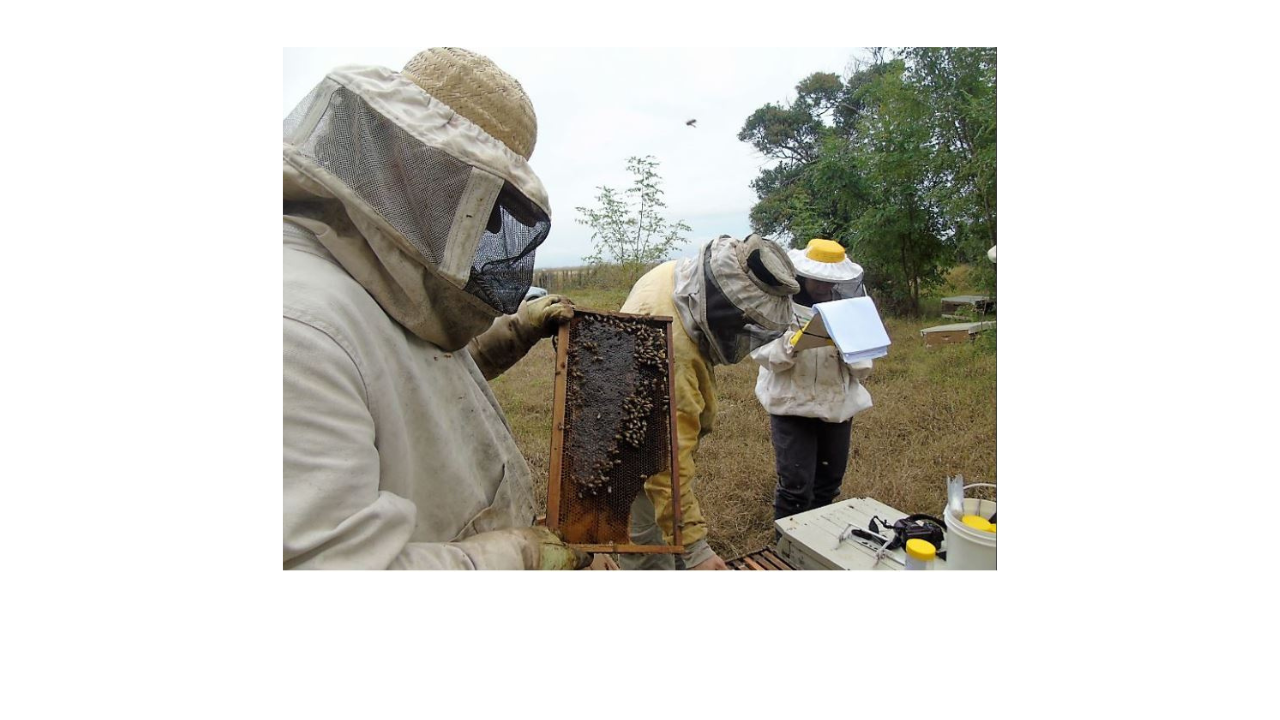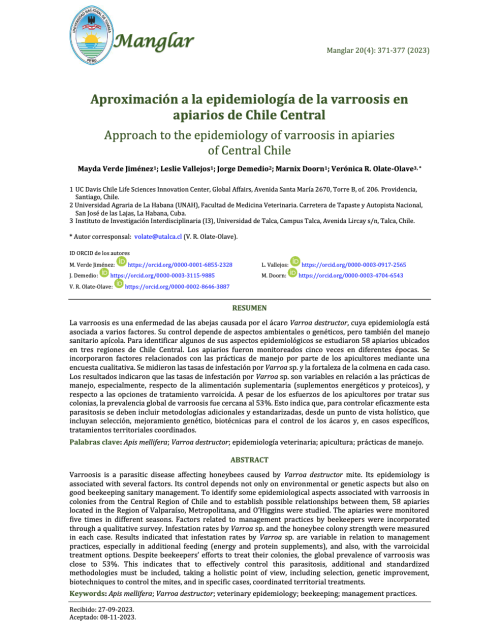
Approach to the epidemiology of varroosis in apiaries of Central Chile
Verde Jiménez, M., Vallejos, L., Demedio, J., Doorn, M., & Olate-Olave, V. R. (2023). Aproximación a la epidemiología de la varroosis en apiarios de Chile Central. Manglar, 20(4), 371–377
DOI: https://doi.org/10.57188/manglar.2023.043
ABSTRACT

Varroosis is a parasitic disease affecting honeybees caused by Varroa destructormite. Its epidemiology is associated with several factors. Its control depends not only on environmental or genetic aspects but also on good beekeeping sanitary management. To identify some epidemiological aspects associated with varroosis in colonies from the Central Region of Chile and to establish possible relationships between them, 58 apiaries located in the Region of Valparaíso, Metropolitana, and O’Higgins were studied. The apiaries were monitored five times in different seasons. Factors related to management practices by beekeepers were incorporated through a qualitative survey. Infestation rates by Varroasp. and the honeybee colony strength were measured in each case. Results indicated that infestation rates by Varroasp. are variable in relation to management practices, especially in additional feeding (energy and protein supplements), and also, with the varroicidal treatment options. Despite beekeepers’ efforts to treat their colonies, the global prevalence of varroosis was close to 53%. This indicates that to effectively control this parasitosis, additional and standardized methodologies must be included, taking a holistic point of view, including selection, genetic improvement, biotechniques to control the mites, and in specific cases, coordinated territorial treatments.